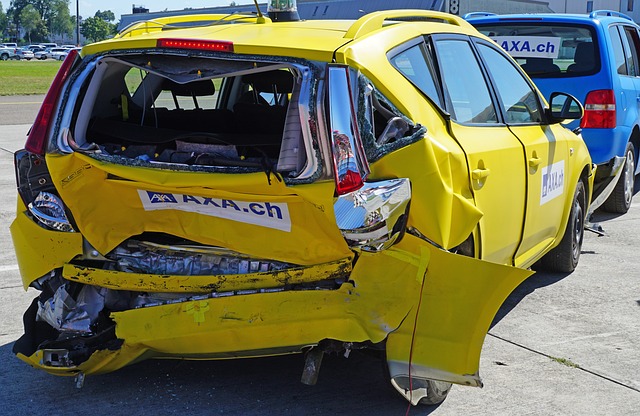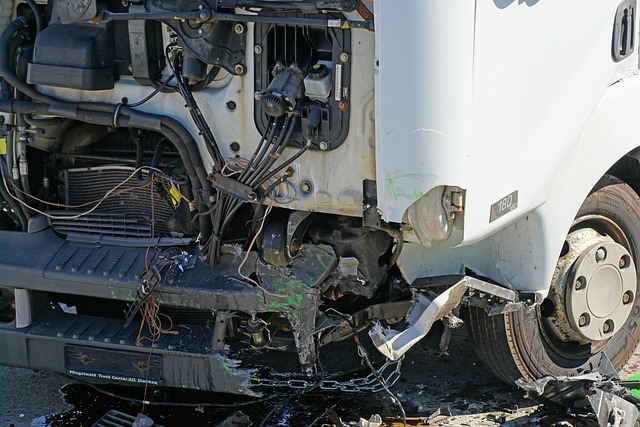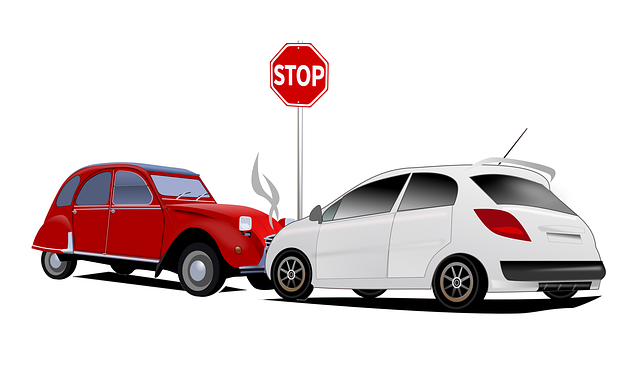California has updated its minimum auto insurance requirements to enhance driver protection and mitigate financial burdens after accidents, with new higher limits for bodily injury liability and property damage coverage. Drivers must reassess their policies to ensure they're not underinsured in light of these changes. It's crucial to understand the differences between collision and comprehensive coverage—collision covers vehicular damages, while comprehensive covers non-vehicular incidents like theft or natural disasters. The choice between these should be informed by your vehicle's value, location, and personal risk factors. Consider your financial situation when selecting a deductible, balancing affordability with the ability to cover out-of-pocket costs in claims. Liability insurance is mandatory and protects against financial responsibility for injuries or property damage caused to others, with California's minimum coverage at 15/30/5. Higher coverage limits may be necessary depending on personal risk factors. A full coverage policy that includes collision, comprehensive, and liability insurance is recommended for leased or financed vehicles, newer models, and to comply with stringent state laws. Insurance rates in California are influenced by its dense population, high theft rates, and varied climates, as well as individual driver records. Tailor your coverage based on vehicle value, usage, and financial circumstances, considering available discounts, and regularly update your policy to maintain adequate protection. Always aim for higher limits than the state minimum to ensure robust financial protection in case of accidents or vehicle loss.
navigating the complexities of auto insurance in California has become a pivotal task for drivers as rates ascend. The Golden State’s latest auto insurance regulations demand a careful review of one’s policy to ensure adequate coverage without unnecessary expense. This article delves into the nuances of collision versus comprehensive coverage, the impact of deductible choices, and the essentials of liability and full coverage insurance. By examining these factors, drivers can make informed decisions that align with their specific needs, ultimately optimizing their auto insurance policy in the face of rising premiums. Join us as we explore the critical aspects of safeguarding your vehicle with the right insurance tailored to California’s evolving standards.
- Assessing California's Stricter Auto Insurance Guidelines
- Understanding Collision vs. Comprehensive Coverage
- Deductible Options: What You Need to Know
- Liability Insurance: Minimum Requirements and Beyond
- Evaluating Full Coverage Insurance Benefits
- Factors Influencing Auto Insurance Rates in California
- Tips for Optimizing Your Auto Insurance Policy
Assessing California's Stricter Auto Insurance Guidelines

In response to increasing vehicular incidents and claims, California has recently enacted stricter auto insurance guidelines. These changes reflect a broader trend across the United States, where states are reassessing minimum coverage requirements to better protect drivers and reduce financial strain on individuals following accidents. The new standards set forth by California mandate higher limits for bodily injury liability per person and per accident, as well as increased property damage coverage minimums. This shift ensures that drivers have more robust protection against potential financial losses in the event of an incident. It also underscores the importance of drivers reviewing their policies to align with these elevated requirements. As a result, Californian motorists must be proactive in understanding and adapting to these new mandates to avoid finding themselves underinsured. Navigating the nuances of auto insurance can be complex, but staying informed about state-specific regulations like California’s stricter guidelines is crucial for maintaining adequate coverage and financial security on the road.
Understanding Collision vs. Comprehensive Coverage

When navigating auto insurance, distinguishing between collision and comprehensive coverage is crucial for protecting your vehicle. Collision coverage addresses damage to your car when it collides with another object, such as another vehicle, a tree, or a building. This aspect of your policy kicks in to repair or replace your vehicle regardless of who is at fault. On the other hand, comprehensive coverage extends beyond collision events; it covers damage from non-collision incidents like theft, vandalism, natural disasters, or animal collisions. It’s important to assess your personal risk factors and the value of your vehicle when deciding between these two types of coverage. For instance, if you live in an area prone to severe weather or have a history of car break-ins, comprehensive coverage might be a worthwhile investment to safeguard against such events. Conversely, if your vehicle is older and less valuable, you may choose to forgo comprehensive coverage in favor of saving on premiums. Understanding the nuances between collision and comprehensive coverage allows you to tailor your policy to best suit your financial situation and specific risk exposure. It’s a balancing act between adequate protection and cost-effective decision-making that can save you from financial strain should an incident occur.
Deductible Options: What You Need to Know

When evaluating auto insurance policies, deductible options play a pivotal role in determining your out-of-pocket expenses should you file a claim. A deductible is the amount you agree to pay out of pocket before your insurance coverage kicks in. Choosing the right deductible involves a balance between affordability and financial protection; select one that is high enough to keep premiums low but not so high that it becomes financially burdensome during an actual claim event. For instance, if you opt for a higher deductible, your monthly or annual insurance premiums will typically decrease. Conversely, a lower deductible means you’ll pay less out of pocket in the event of an accident but will likely have higher premiums. It’s crucial to assess your financial situation and consider how much you can realistically afford to pay in the event of damage or theft. Additionally, different coverage types, like collision or comprehensive, may have separate deductibles, so it’s essential to understand these nuances and how they apply to your specific policy. By carefully considering your deductible options, you can make an informed decision that aligns with your financial comfort level and risk tolerance, ensuring you are neither underinsured nor overpaying for your auto insurance coverage.
Liability Insurance: Minimum Requirements and Beyond

Liability insurance is a cornerstone of auto insurance policies, serving as a financial safeguard for drivers against the damage they may cause to others in the event of an accident. Each state sets minimum requirements for liability coverage, which typically includes two components: bodily injury per person and bodily injury per accident, as well as property damage. For instance, California’s minimum requirements are 15/30/5, meaning $15,000 for injury to one person, $30,000 for all injuries in an accident, and $5,000 for property damage. However, these minimums may not always be sufficient to cover the costs of serious accidents. It’s crucial to consider your personal risk factors—such as the value of your assets, the likelihood of an accident given your driving history and habits, and the average cost of medical care in your area—to determine whether purchasing higher limits is advisable. Beyond the minimum, understanding the nuances of liability coverage, like the difference between split and combined limits, can help you make a more informed decision. This ensures that you are adequately protected against potential lawsuits or claims for damages exceeding the state-mandated threshold. In essence, while adhering to the legal floor set by your state, drivers should aim to understand their individual needs and the potential costs of liability claims, which can often extend beyond the minimum requirements and lead to financial hardship if not properly insured.
Evaluating Full Coverage Insurance Benefits

Evaluating full coverage insurance can be a complex task, but it is a critical step in ensuring that your vehicle and finances are adequately protected. Full coverage typically includes both collision and comprehensive coverage, along with liability insurance, which covers damages or injuries you cause to others. Collision coverage compensates for damage to your vehicle when it collides with another object, while comprehensive coverage addresses damage from non-collision events like theft, vandalism, or natural disasters.
The benefits of full coverage become evident when considering the potential costs associated with repairing or replacing your vehicle. For instance, if you lease or finance your car, the lender will likely require full coverage to safeguard their investment. Moreover, if your vehicle is newer or has a higher resale value, full coverage can ensure that you receive fair compensation for its actual cash value in the event of a total loss. It’s also worth considering that as states implement stricter guidelines for minimum requirements, full coverage may provide additional peace of mind and financial protection beyond what is mandated. When evaluating full coverage insurance, it’s important to weigh the cost against the coverage limits, your vehicle’s value, and your personal risk tolerance. By doing so, you can make an informed decision that aligns with your needs and budget.
Factors Influencing Auto Insurance Rates in California

California’s auto insurance rates are influenced by a multitude of factors, reflecting both the state’s unique driving conditions and broader regulatory changes. The California State minimum requirements set a baseline for coverage, which has been tightened in recent years to ensure drivers have adequate protection. These requirements include liability coverage, which covers damage or injury caused to others, but do not cover damages to your own vehicle. As such, drivers often opt for additional coverage like collision and comprehensive insurance to protect their vehicles from various risks, including theft, vandalism, natural disasters, and accidents involving uninsured motorists.
The cost of auto insurance in California can also be attributed to factors such as the high density of population leading to increased traffic congestion, higher rates of vehicular theft, and the diverse climatic conditions that can lead to a higher frequency of claims. Additionally, California’s implementation of Proposition 213, which affects the discounts available for personal use vehicles, and the state’s varying accident and violation records among drivers also play significant roles in determining insurance premiums. Insurers analyze these factors to assess risk and set rates accordingly, making it crucial for drivers to understand their coverage options and tailor their policies to their individual needs and circumstances.
Tips for Optimizing Your Auto Insurance Policy

When optimizing your auto insurance policy, it’s crucial to assess your coverage needs based on your vehicle, usage patterns, and personal financial situation. Start by reviewing your current policy to understand what is covered under collision and comprehensive options. Collision coverage typically pays for damage to your car when it collides with another object, while comprehensive coverage addresses damages from non-collision events like theft, natural disasters, or animal collisions. Evaluate the replacement cost of your vehicle against the potential repair costs to determine if the collision coverage limit aligns with its value.
Next, consider your deductible options carefully. A higher deductible can lead to lower premiums, but only choose this route if you have savings set aside for unexpected repair costs. Conversely, a lower deductible means easier access to funds when needed but will likely come with higher monthly or annual premiums. Additionally, take advantage of available discounts, such as those for safe driving, installation of safety devices, or being a long-term policyholder. Bundling your auto insurance with other policies, like home or renters insurance, can also yield significant savings. Keep in mind that state minimum requirements are just that—minimum—and may not offer the protection you need. Aim for coverage limits that exceed the state minimum to ensure adequate financial security in the event of an accident or loss. Regularly review your policy to account for changes in your driving habits, vehicle condition, and any new state regulations, adjusting your coverage as necessary to maintain optimal protection at the best value.
When navigating the complexities of auto insurance, it’s crucial to tailor your policy to your specific circumstances. With California leading the way in enacting stricter auto insurance guidelines, understanding the nuances between collision and comprehensive coverage, and grasping deductible options becomes increasingly significant. This article has demystified these aspects, guiding you through the essentials of liability and full coverage insurance, as well as identifying factors that influence rates in California. By applying the insights from each section—Assessing California’s Stricter Auto Insurance Guidelines, Understanding Collision vs. Comprehensive Coverage, Deductible Options: What You Need to Know, Liability Insurance: Minimum Requirements and Beyond, Evaluating Full Coverage Insurance Benefits, and Factors Influencing Auto Insurance Rates in California—you are now equipped with the tools to optimize your auto insurance policy. Remember to periodically reassess your coverage as your driving habits or vehicle changes to ensure you maintain the right balance of protection and cost-efficiency.



